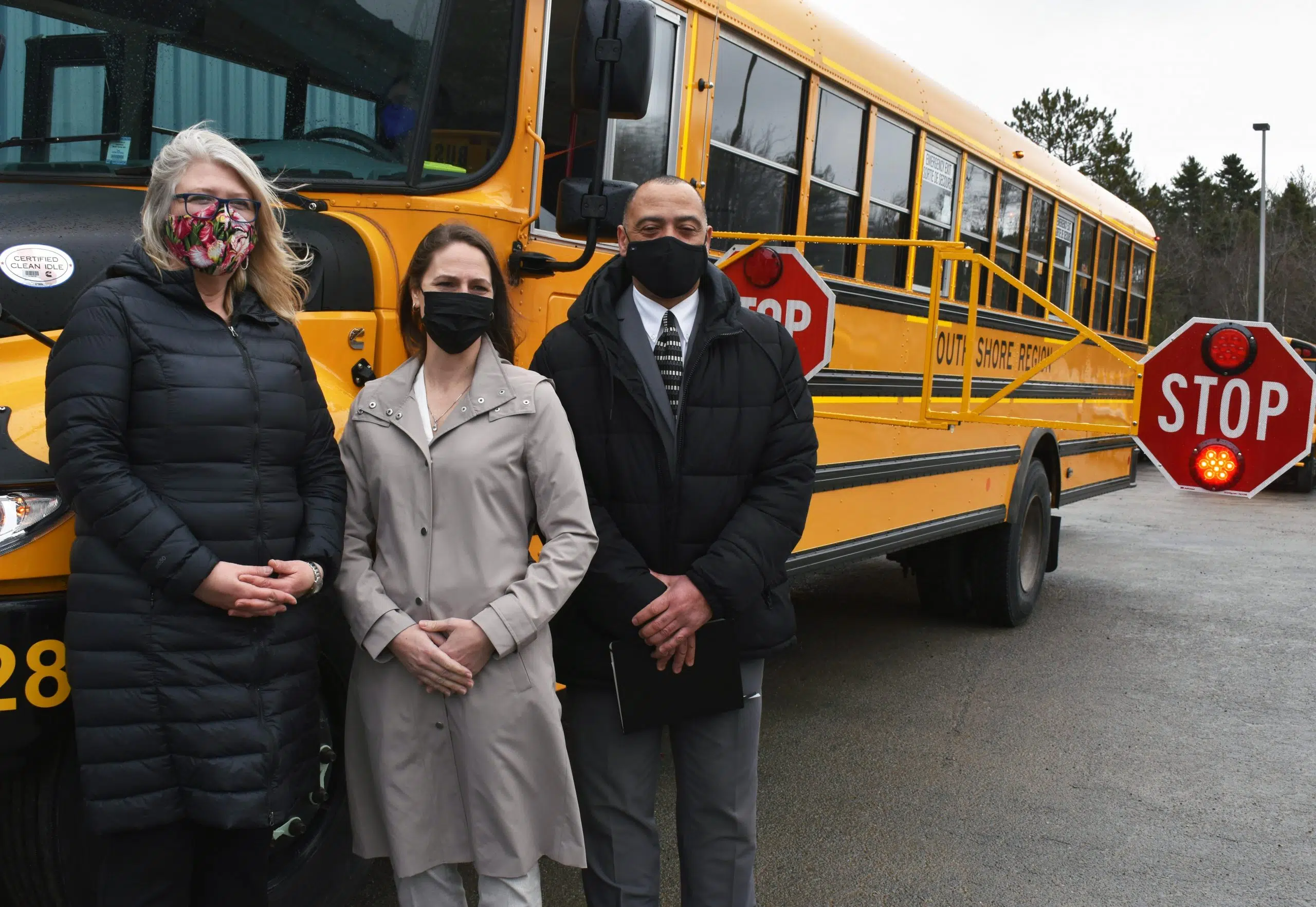Hebbville Academy, in Bridgewater, is the first school in Atlantic Canada to debut an extended stop arm on a school bus.
The move comes after the South Shore Regional Centre for Education recorded 178 instances of drivers running the pop-out stop sign on school busses – with twelve of those being on the route selected to test the new extended stop sign arm.
“Every day our goal is to ensure our students that we transport are safe and this is one way that we are hoping to increase that safety,” says Denise Crouse, transportation coordinator for the SSRCE.
The extended stop arm has been piloted in two British Columbia communities and showed success.
While there’s no set end date for the pilot, Crouse hopes to keep it going for a full academic year to get the best idea if it’s working or not.
If successful, she says they’ll slowly begin adding the extended stop arms to the bus routes with the most traffic violations.
This is just one of many ways the SSRCE is working to protect students, Crouse says.
The centre for education also has exterior cameras installed on busses and some routes are trailed by inspectors to ensure people are following stopping rules at bus stops.
The pilot is gaining popularity with parents and drivers, says Crouse, who also chairs the Nova Scotia Pupil Transportation Committee.
“So much positivity from parents, from other drivers, from our school system; it’s been a positive message throughout this whole process.”
The SSRCE was among the centres for education that had the highest instances of school bus stop arm violations in Nova Scotia. That’s why it was selected for the pilot.
Tri-County and Strait Regional Centres for Education came in just below the SSRCE for total number of violations in an academic year.
In Nova Scotia, failing to stop for a school bus can result in a first offence fine of $410 and six points on your license.









